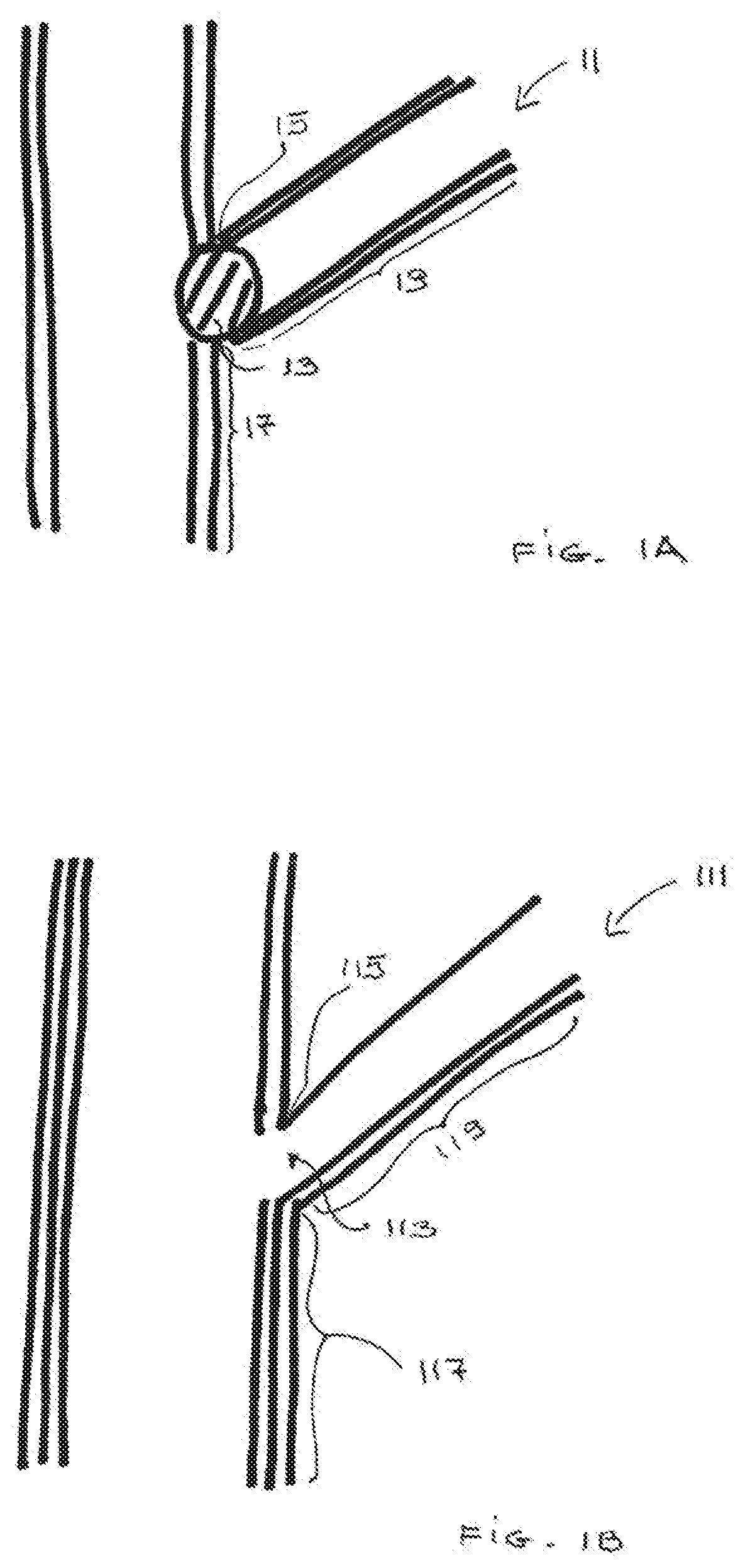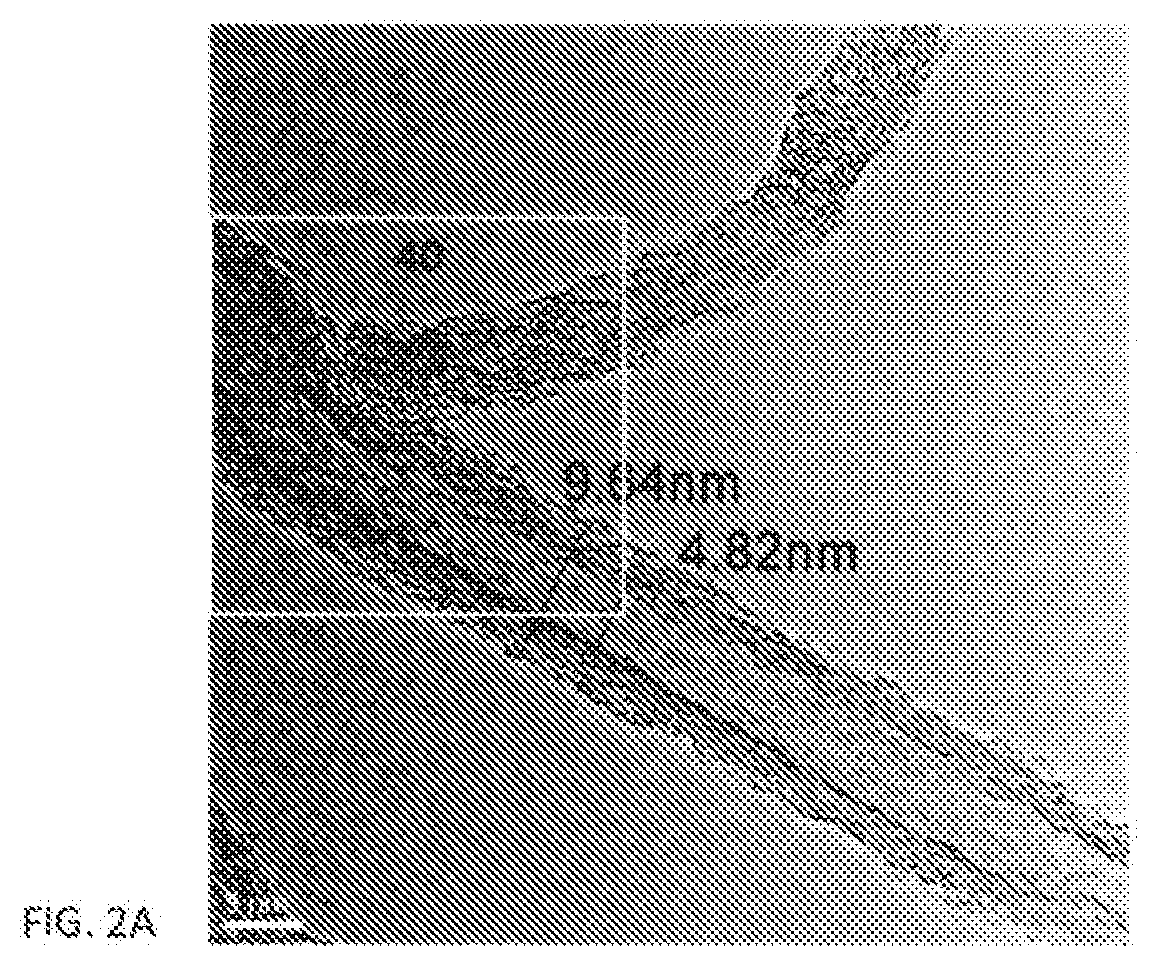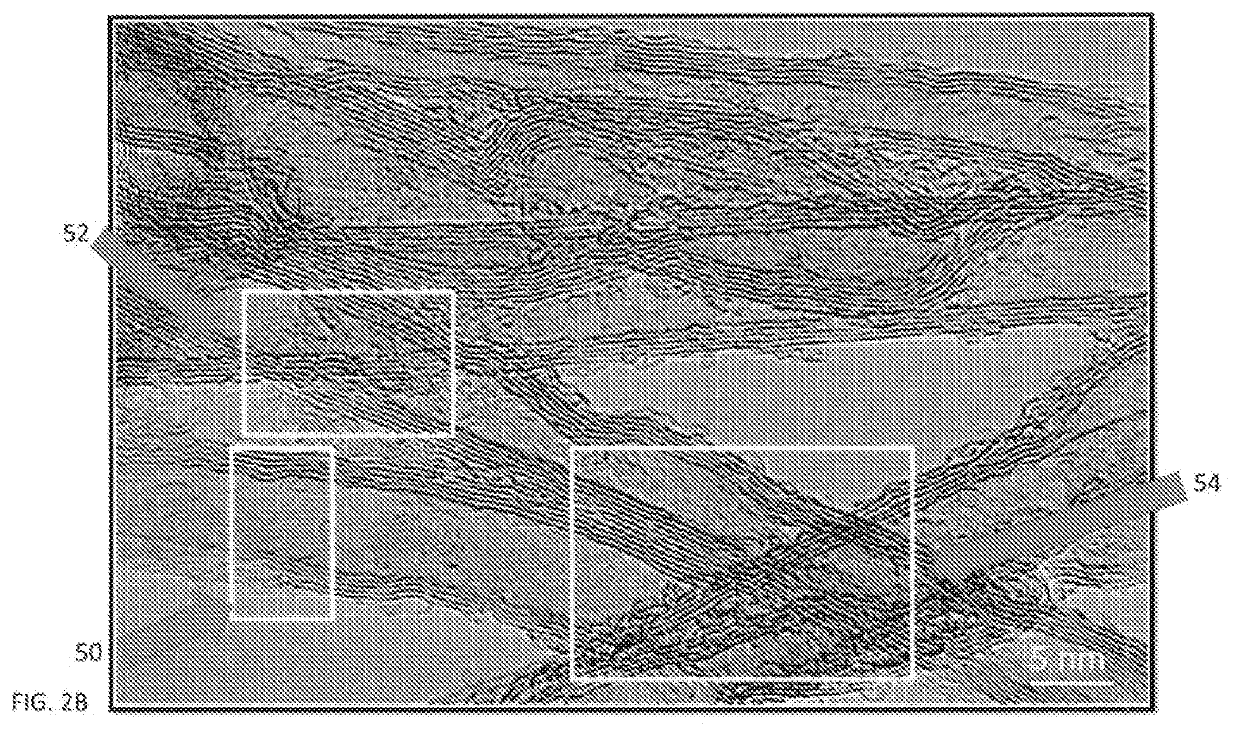Anode electrode compositions and aqueous dispersions for battery applications
- Summary
- Abstract
- Description
- Claims
- Application Information
AI Technical Summary
Benefits of technology
Problems solved by technology
Method used
Image
Examples
example 1
Preparation of Aqueous Dispersions Containing CNS
[0188]A series of aqueous solutions with dispersant concentrations ranging from 0.1 wt % to 1 wt % in deonized (DI) water were prepared in a study aimed at identifying suitable dispersants or thickening agents for making CNS dispersions.
[0189]100 g of each solution was placed in a paint can along with a desired amount of PEG encapsulated CNS powder, typically in the range of 0.2-1 wt.%, and 100 g zirconia beads grinding media having a size of 0.5 mm. The dispersion components were bead milled for 4 hours (h) in the sealed cans by utilizing a LAU disperser (model DAS 200, manufactured by LAU GmbH).
[0190]After milling, the dispersion appearance was analyzed visually and only the dispersions that showed uniform consistency with clear flowable behavior in the can (and through 0.1 mm mesh filter necessary to separate the media) were advanced to the next step. This approach allowed prescreening various dispersants and thickeners, and determ...
example 2
Preparation of Aqueous Dispersion Comprising CNS and a Conductive Carbon Black Additive
[0198]In this example an aqueous dispersion of CNS also included a conductive carbon black and was labelled as Disp C.
[0199]Disp C dispersion was prepared by starting with Disp B (as described in Example 1). 3 g of LITX® HP conductive carbon black powder with OAN=250 ml / 100g and BET =100 m2 / g (available from Cabot Corporation) was slowly added to 300 g of Disp B. The mixture was further milled using MiniCer mill for 15 min using the same conditions disclosed in the Example 1. As seen in Table 3 above, Disp C had acceptable viscosity, excellent Hegman gauge results and was stable in storage (showed no precipitation over a period of one month).
example 3
Preparation of an Anode Slurry using an Aqueous CNS Dispersion
[0200]20 g of aqueous CNS-containing Dis B (according to Example 1) and 21.82 g of aqueous 2 wt % Carboxymethyl Cellulose, Sodium Salt (CMC) were combined in a cup from Thinky mixer (model ARE-310) and mixed for 10 mins. The mixture was then combined with 18.94 g of graphite (BTR-918, available from BTR, China), hand-mixed for 5 minutes and mixed by the Thinky mixer for additional 5 minutes. 2.1 grams SiO / C powder (KSC-1265, Shin-Etsu Chemical Co., Ltd) was added and mixed for 3 min using the Thinky mixer. This was followed by combining 0.485 g of styrene-butadience rubber (SBR) (TD105A, JSR) with the mixture and mixing for 1 minute using the same mixer. Finally, 1.61 grams of DI water was added to the slurry, and the slurry was mixed for 24 additional minutes using the Thinky mixer.
[0201]The composition of the slurry was 96.45 wt % graphite / SiO (with the ratio of graphite to SiO=90:10); 0.55 wt % CNS (Disp B); 2 wt % CMC...
PUM
| Property | Measurement | Unit |
|---|---|---|
| Time | aaaaa | aaaaa |
| Percent by mass | aaaaa | aaaaa |
| Viscosity | aaaaa | aaaaa |
Abstract
Description
Claims
Application Information
 Login to View More
Login to View More - R&D
- Intellectual Property
- Life Sciences
- Materials
- Tech Scout
- Unparalleled Data Quality
- Higher Quality Content
- 60% Fewer Hallucinations
Browse by: Latest US Patents, China's latest patents, Technical Efficacy Thesaurus, Application Domain, Technology Topic, Popular Technical Reports.
© 2025 PatSnap. All rights reserved.Legal|Privacy policy|Modern Slavery Act Transparency Statement|Sitemap|About US| Contact US: help@patsnap.com



